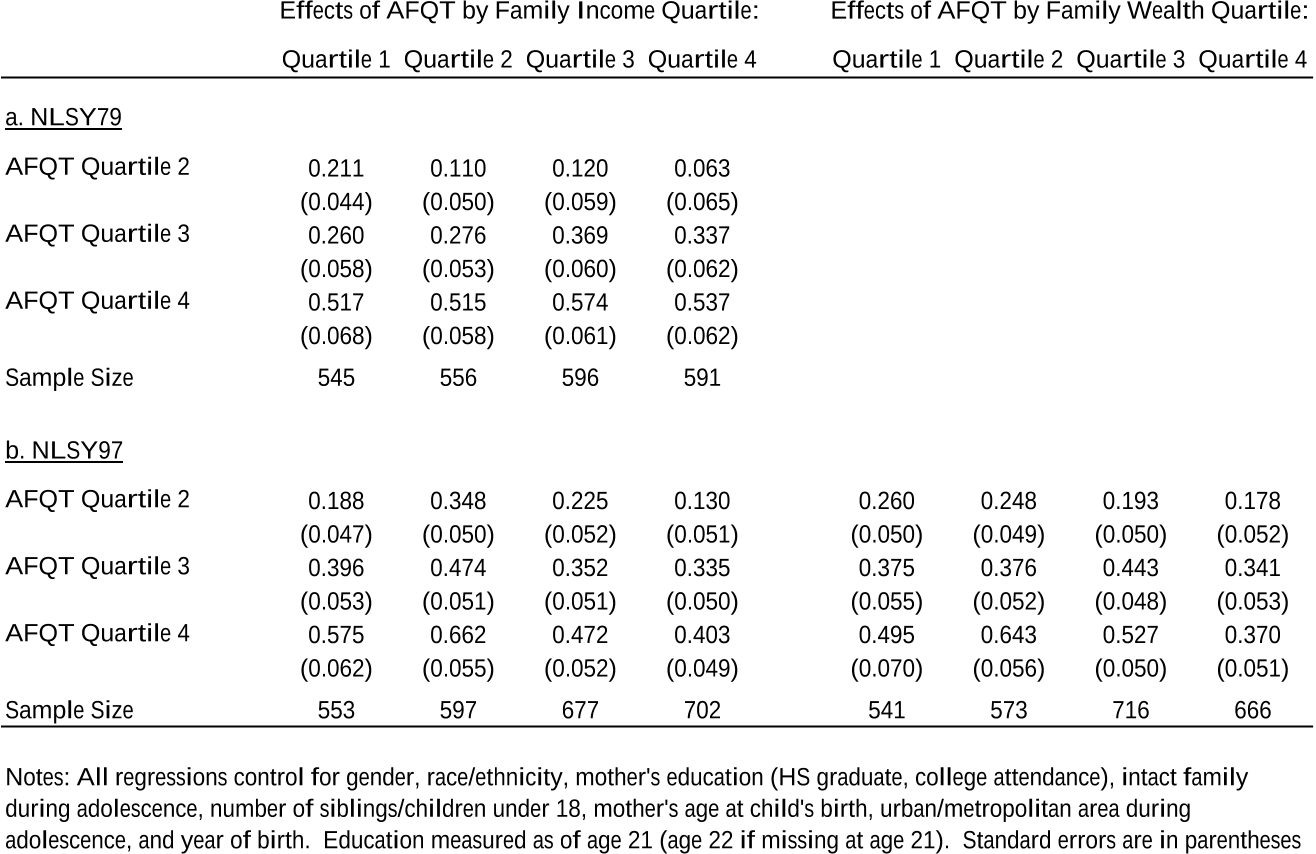The Nature of Credit Constraints and Human Capital
Reads0
Chats0
TLDR
This paper developed a human capital model with borrowing constraints explicitly derived from government student loan (GSL) programs and private lending under limited commitment, which helps explain the persistent strong positive correlation between ability and schooling in the U.S., as well as the rising importance of family income for college attendance.Abstract:
We develop a human capital model with borrowing constraints explicitly derived from government student loan (GSL) programs and private lending under limited commitment. The model helps explain the persistent strong positive correlation between ability and schooling in the U.S., as well as the rising importance of family income for college attendance. It also explains the increasing share of undergraduates borrowing the GSL maximum and the rise in student borrowing from private lenders. Our framework ofiers new insights regarding the interaction of government and private lending as well as the responsiveness of private credit to economic and policy changes.read more
Figures

Table 3: Baseline Model Parameters 
Figure 4: dU , hU , hX , and hG for high wealth individuals (w > w̄) 
Figure 3: dU , hU , hX , and hG for low wealth individuals (w ≤ w̄) 
Figure 8: ‘Year 2000’ GSL and Private Lending Constraints 
Figure 9: Private Borrowing (‘Year 2000’) 
Table 2: Estimated Effects of AFQT on College Attendance by Family Income and Wealth (NLSY79 and NLSY97)
Citations
More filters
Journal ArticleDOI
Equilibrium Tuition, Applications, Admissions and Enrollment in the College Market
TL;DR: This paper developed and estimated a structural equilibrium model of the college market, where students, having heterogeneous abilities and preferences, make college application decisions, subject to uncertainty and application costs, and colleges, observing only noisy measures of student ability, choose tuition and admissions policies to compete for more able students.
Journal ArticleDOI
Parental Job Loss and Children's Long-Term Outcomes: Evidence from 7 Million Fathers' Layoffs
TL;DR: This paper exploited the timing of 7 million fathers' layoffs when children are age 12-29 in administrative data for the United States and found that larger effects based on firm closures stem from selection.
Journal ArticleDOI
Accounting for Cross-Country Differences in Intergenerational Earnings Persistence: The Impact of Taxation and Public Education Expenditure
TL;DR: In this article, a strong negative cross-country correlation between intergenerational earnings persistence and measures of tax progressivity was found, and the correlation between the two factors was investigated.
Journal ArticleDOI
Credit Supply and the Rise in College Tuition: Evidence from the Expansion in Federal Student Aid Programs
TL;DR: The authors found that institutions more exposed to changes in the subsidized federal loan program increased their tuition disproportionately around these policy changes, with a sizable pass-through effect on tuition of about 65 percent.
Posted Content
Code and data files for "The Federal Student Loan Program: Quantitative Implications for College Enrollment and Default Rates"
TL;DR: There are 21 codes to solve the model and deliver the results in the paper, which are grouped in 4 categories: 4 codes that deliver the main results inThe paper and the distribution of initial characteristics, and 3 auxiliary codes used in simulations.
References
More filters
Journal ArticleDOI
The Production of Human Capital and the Life Cycle of Earnings
TL;DR: In this paper, the authors provide a framework for the understanding of many aspects of observed behavior regarding education, health, occupational choice, mobility, etc., as rational investment of present resources for the purpose of enjoying future returns.
Book ChapterDOI
Changes in the Wage Structure and Earnings Inequality
Lawrence F. Katz,David H. Autor +1 more
TL;DR: In this article, the authors present a framework for understanding changes in the wage structure and overall earnings inequality, emphasizing the role of supply and demand factors and the interaction of market forces and labor market institutions.
ReportDOI
Interpreting the evidence on life cycle skill formation
TL;DR: In this paper, the authors formalize the concepts of self-productivity and complementarity of human capital investments and use them to explain the evidence on skill formation, and provide a theoretical framework for interpreting the evidence from a vast empirical literature, for guiding the next generation of empirical studies, and for formulating policy.
Journal ArticleDOI
Life Cycle Schooling and Dynamic Selection Bias: Models and Evidence for Five Cohorts of American Males
TL;DR: This article examined the statistical model used to establish the empirical regularity and the intuitive behavioral interpretation often used to rationalize it, and showed that the implicit economic model assumes myopia and that the intuitive interpretive model is identified only by imposing arbitrary distributional assumptions onto the data.
Related Papers (5)
The Evidence on Credit Constraints in Post-Secondary Schooling†
Pedro Carneiro,James J. Heckman +1 more